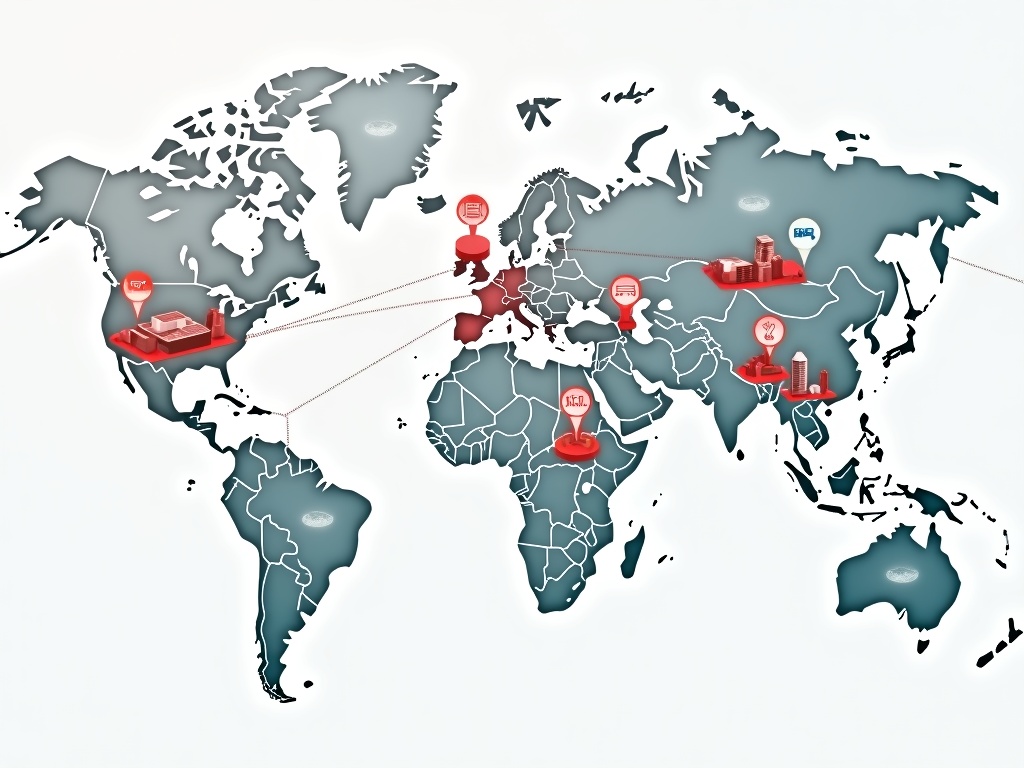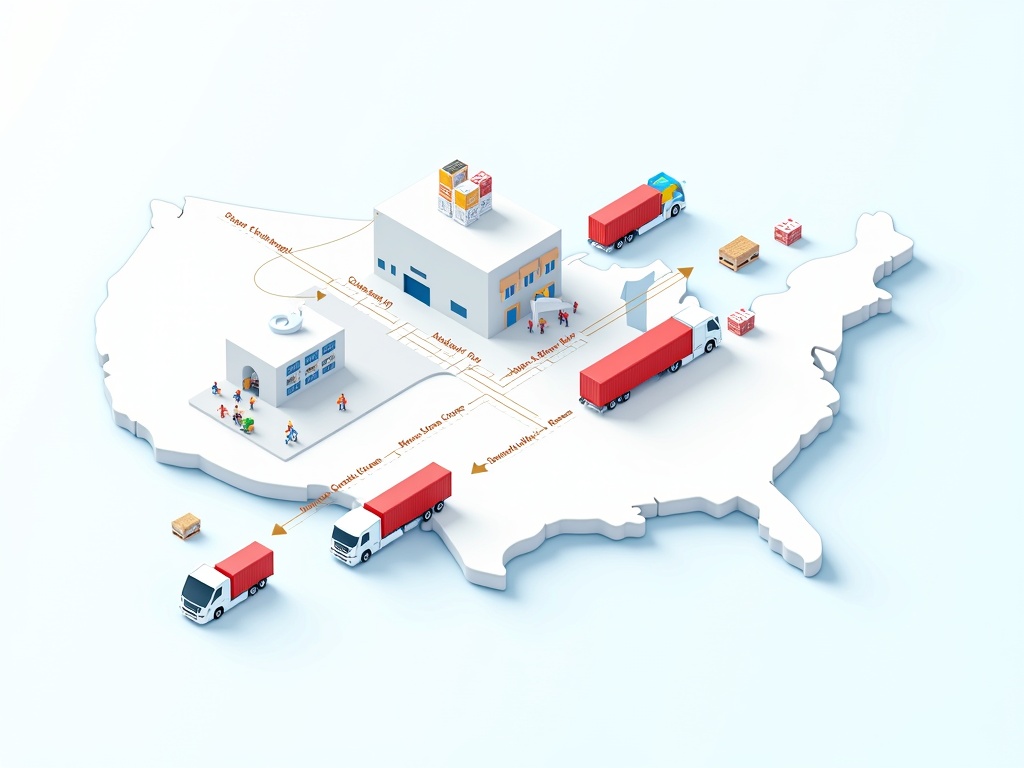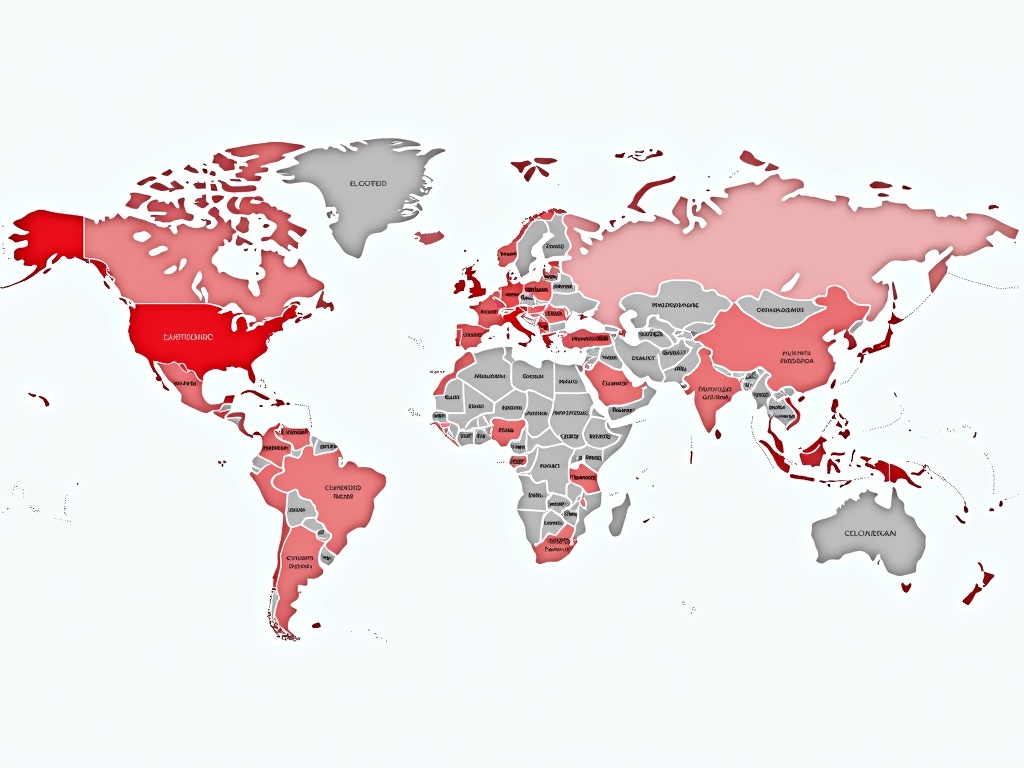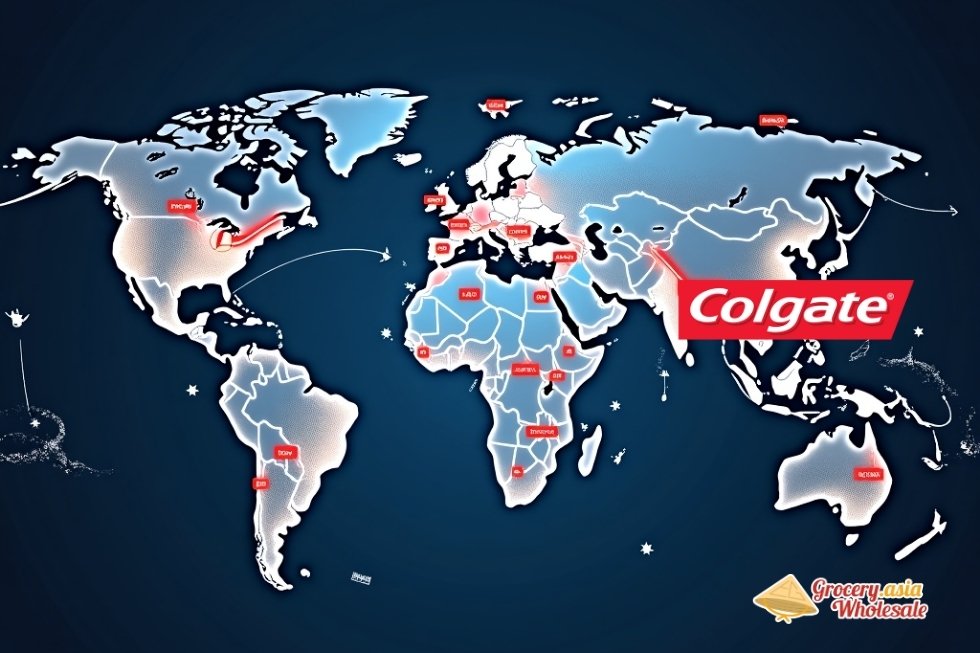No products in the cart.
Colgate Dental Care, Dental Care, Personal Care News
Where Colgate Toothpaste Is Manufactured And Distributed
Where Colgate toothpaste is manufactured is a key question for consumers and industry professionals interested in the brand’s global operations. Colgate-Palmolive runs one of the most extensive manufacturing networks in the consumer goods sector, producing goods in 79 facilities across more than 70 countries. This vast system enables the company to efficiently serve over 200 countries and territories, securing its dominant position in the worldwide oral care market.
Table of Contents
Key Takeaways
- Global Manufacturing Network: Colgate runs 79 production facilities in over 70 countries. Major production hubs include the United States (Morristown, Tennessee), Mexico (Mission Hills), Poland (Swidnica), China (Guangzhou), and India (Sanand and Baddi).
- Regional Production Strategy: Facilities are strategically located near major consumer markets to minimize transportation costs, improve delivery times, and meet local preferences and regulations efficiently.
- Market Distribution: More than 70% of Colgate’s revenue originates from outside the United States. The company’s global revenue breakdown includes Latin America (23%), North America (21%), Asia Pacific (16%), Europe (14%), and Africa/Eurasia (6%).
- Quality Standards: All production locations adhere to uniform Good Manufacturing Practices (GMP) and quality control standards. Products are consistent across countries, with the “Made In” label denoting only the final assembly location.
- Supply Chain Efficiency: Colgate employs a hybrid distribution model. In mature markets, it relies on direct sales to major retailers. In developing economies, it partners with local distributors to maximize market penetration and consumer reach.
Where Colgate Toothpaste Is Manufactured and Distributed
Colgate-Palmolive operates an extensive global manufacturing network spanning approximately 79 production facilities across more than 70 countries. This vast infrastructure enables the company to serve billions of consumers worldwide while maintaining consistent product quality and availability.
Regional Manufacturing Strategy
I’ve observed that Colgate employs a strategic approach to manufacturing by positioning production facilities close to major consumer markets. This regional strategy serves multiple critical purposes for the company’s operations and customer satisfaction.
The benefits of this decentralized manufacturing approach include:
- Reduced transportation costs and environmental impact through shorter shipping distances
- Faster delivery times to retail partners and distributors
- Enhanced ability to customize products for local market preferences and regulations
- Greater flexibility in responding to regional demand fluctuations
- Improved supply chain resilience against global disruptions
Manufacturing Locations and Distribution Benefits
Major manufacturing hubs include facilities in North America, Europe, Asia-Pacific, Latin America, and Africa. Each region houses multiple plants that produce various Colgate products, including their popular cavity prevention formulas and specialized variants.
The company’s market dominance stems partly from this manufacturing strategy, which allows rapid market penetration and sustained local presence. Plants can quickly adapt production schedules to meet seasonal demands or launch new products like whitening toothpastes without lengthy international shipping delays.
This distributed manufacturing model also helps Colgate navigate complex international trade regulations and tariff structures. Local production often qualifies products for preferential trade status and reduces exposure to currency fluctuations that could affect imported goods pricing.
The company maintains strict quality control standards across all facilities, ensuring that whether you purchase Colgate toothpaste manufactured in Thailand, Mexico, or Germany, you receive the same high-quality product. This consistency has been crucial for building global brand trust and maintaining export standards that meet international requirements.
Furthermore, regional manufacturing supports local economies through job creation and supplier partnerships. Many facilities source packaging materials and secondary ingredients from nearby suppliers, creating integrated supply chains that benefit entire communities while maintaining cost efficiency for the company’s wholesale operations.

Major Toothpaste Production Hubs on Five Continents
Colgate has adopted a highly strategic approach to global manufacturing, establishing toothpaste production facilities across five continents to effectively serve regional markets. Each facility operates at a massive scale, supporting Colgate’s market dominance through optimized distribution networks and efficient logistics infrastructure.
North American Manufacturing Excellence
The Morristown, Tennessee facility is a cornerstone of Colgate’s North American operations. This state-of-the-art 500,000+ square foot plant has recently seen a $50 million expansion, showcasing Colgate’s commitment to meeting growing U.S. demand. The site’s central location ensures efficient distribution across major North American metropolitan regions.
Meanwhile, the Mission Hills facility in San José Iturbide, Mexico serves a dual purpose: it functions as a production center for Latin American markets and as an export hub for North America. This strategic placement creates logistical efficiencies while minimizing transportation costs across the region.
Global Production Network Spanning Continents
In Europe, Colgate operates a significant facility in Swidnica, Poland—home to one of the continent’s largest toothpaste factories. Positioned in Central Europe, this plant benefits from Poland’s superior transportation infrastructure, enabling timely product delivery throughout the European Union.
Asia features Colgate’s most diverse production network, built to serve billions of consumers. Key facilities across the continent include:
- Guangzhou, China – Primary production hub for Chinese consumers and greater Asia.
- Sanand, Gujarat (India) – Critical hub serving India’s vast domestic market.
- Baddi, Himachal Pradesh (India) – Additional facility to meet India’s regional demand.
These Asian manufacturing centers are especially vital as India constitutes one of Colgate’s biggest markets worldwide. The company has tailored these facilities to supply large and diverse populations, integrating substantial production capacity with advanced logistics coordination.
Each hub operates autonomously to best address local product preferences while adhering to global quality standards. For example, India-based plants focus on formulas favored by South Asian consumers, while the European factory aligns outputs with EU regulatory and customer preferences.
This decentralized model enhances supply chain resilience. If disruption occurs in one region, production from other hubs can be scaled to compensate, enabling consistent product availability—a crucial feature during recent global logistics challenges.
Colgate’s investment in distributed manufacturing demonstrates a deep understanding that successful export operations rely on robust, local capabilities. This model reduces shipping costs, cuts down on environmental impact, and accelerates time-to-market for new and existing products.
These facilities also support specialized product lines. While some centers focus on premium offerings like whitening toothpaste formulations, others prioritize value-based options suited to price-sensitive markets. This versatility allows Colgate to cater to a vast range of consumer preferences worldwide.
Significant investments in automation and modernization ensure all facilities remain competitive. The $50 million expansion in Tennessee increases both capacity and efficiency—a trend echoed across the global network.
Colgate’s strategically located manufacturing hubs enable the company to deliver regional responsiveness and maintain high product standards. From fresh breath solutions to cavity protection, every facility is equipped to produce the complete lineup of Colgate offerings suited to its regional consumer base.
For example, the facilities involved in producing formulations like Colgate Max Fresh adapt their production to localized preferences while adhering to Colgate’s stringent global standards.
From Factory to Store: The North American Supply Chain
I’ve traced Colgate’s North American supply chain to understand how their toothpaste reaches millions of consumers across the continent. The process begins at two primary manufacturing locations that serve the entire U.S. market with impressive efficiency.
Colgate produces most of its toothpaste for American consumers at their main facility in Morristown, Tennessee. This factory handles the bulk of production for popular varieties that consumers find on store shelves daily. When demand exceeds capacity or specific product lines require it, the company supplements production through their Mission Hills, Mexico facility, creating a flexible manufacturing network that responds to market needs.
Distribution Strategy and Retail Partnerships
After manufacturing, products move to strategically positioned regional distribution centers in Cambridge, Ohio, and Greenwood, South Carolina. These facilities play a crucial role in the supply chain by assembling mixed pallets containing different product varieties. Staff at these centers combine popular options like Colgate Optic White with Max Fresh varieties and other formulations based on specific retailer requirements.
The distribution centers customize shipments for each major retailer’s unique needs:
- Walmart receives the largest volume, accounting for approximately 15% of Colgate’s global net sales in 2023
- Target, CVS, and Walgreens get tailored product mixes based on their customer demographics
- Regional grocery chains receive customized assortments that match local preferences
- Dollar stores and convenience retailers get smaller, focused selections
This systematic approach allows Colgate to maintain strong relationships with retailers while ensuring optimal product availability. The company’s ability to customize shipments directly impacts how effectively stores can meet consumer demand for different toothpaste varieties.
Colgate’s market dominance stems partly from this efficient distribution network that connects Tennessee and Mexican production facilities with American retailers. The supply chain design minimizes transportation costs while maximizing delivery speed, giving the company a competitive advantage in maintaining shelf presence across thousands of retail locations.
Regional distribution centers also handle inventory management for seasonal demands and new product launches. When Colgate introduces updated formulations or packaging, these facilities coordinate the transition to ensure smooth product rollouts without disrupting supply to major retail partners.

Global Market Dominance and Distribution Networks
Colgate’s impressive 39.5% share of the global toothpaste market as of 2023 reflects the company’s strategic manufacturing and distribution approach across continents. Over 70% of Colgate’s net sales originate from outside the United States, demonstrating how effectively the brand has expanded beyond its domestic roots.
Regional Sales Performance and Market Penetration
The regional breakdown of Colgate’s 2023 sales reveals fascinating insights into global oral care preferences:
- Latin America leads with 23% of total sales, highlighting strong brand loyalty in this region
- North America follows closely at 21%, representing the company’s home market strength
- Asia Pacific contributes 16%, showing significant growth potential in this populous region
- Europe accounts for 14% of sales, reflecting mature market dynamics
- Africa and Eurasia represent 6%, indicating emerging market opportunities
This distribution pattern directly influences where Colgate manufactures its products, with production facilities strategically located to serve these key markets efficiently.
Colgate employs a sophisticated blended distribution model that adapts to local market conditions. In developed countries, the company maintains direct sales relationships with large retail chains, allowing for better inventory management and stronger partnerships. This approach works particularly well in North America and Europe, where major retailers dominate the landscape.
Conversely, in emerging markets across Latin America, Asia Pacific, and Africa, Colgate relies heavily on local distributors who understand regional nuances. These distributors possess established networks and cultural insights that would be difficult for Colgate to replicate independently. This strategy enables the company to penetrate remote areas where direct distribution would be cost-prohibitive.
The company’s presence spans more than 200 countries and territories, creating one of the most extensive distribution networks in the consumer goods industry. Local teams or partners serve everything from massive retail chains to small corner shops, ensuring Colgate toothpaste remains accessible regardless of shopping preferences or economic conditions.
Manufacturing facilities support this global reach by producing region-specific formulations and packaging. Products manufactured for Latin American markets often feature different flavors and fluoride concentrations compared to those produced for European consumers. This localization extends to packaging sizes, with smaller tubes popular in price-sensitive markets and larger family sizes preferred in developed economies.
The distribution strategy also accommodates varying retail landscapes. In countries where traditional trade dominates, such as parts of Africa and Asia, Colgate works through multiple distributor layers to reach neighborhood stores. Meanwhile, in markets dominated by modern trade like North America and Western Europe, the company focuses on key account management with major retailers.
Export labeling requirements vary significantly across these 200+ markets, necessitating sophisticated supply chain management. Manufacturing plants must coordinate with regulatory teams to ensure products meet local standards for ingredients, claims, and packaging information.
Specialized product lines like Colgate Optic White receive targeted distribution based on market demand and regulatory approval. These premium products typically launch first in developed markets before expanding to emerging economies, following a pattern that maximizes revenue while building brand equity.
The company’s distribution efficiency benefits from economies of scale achieved through centralized manufacturing. Wholesale operations leverage this global footprint to offer competitive pricing while maintaining consistent quality standards across all markets.
Colgate’s distribution network continues evolving to address changing consumer behaviors, particularly the growth of e-commerce and changing retail formats. The company adapts its approach while maintaining the fundamental strategy of combining direct relationships in developed markets with distributor partnerships in emerging economies, ensuring products reach consumers efficiently regardless of location or shopping preference.

What “Made In…” On Your Toothpaste Tube Really Means
When I examine the “Made In” label on my Colgate toothpaste tube, I’m looking at information that reveals where the final assembly and packaging took place. This marking doesn’t necessarily indicate where every ingredient originated, but rather identifies the specific facility where all components came together to create the finished product.
The label tells me exactly where ingredients were blended, mixed, and filled into the familiar tubes we purchase. I can trace this manufacturing location back to one of Colgate’s strategic production facilities around the globe. For instance, when I pick up a tube in the United States, it typically displays “Made in USA,” which points directly to the company’s Morristown plant where the final production steps occurred.
Regional Manufacturing Strategy
Colgate’s approach focuses on serving different markets through localized production centers. European consumers will often find labels reading “Made in Poland,” indicating production at the Swidnica facility. This strategy allows the company to respond more effectively to regional preferences and regulatory requirements.
The manufacturing locations I encounter on labels reflect several key factors:
- Proximity to target markets reduces shipping costs and delivery times
- Local facilities can adapt formulations to meet specific regional regulations
- Production capacity can be adjusted based on regional demand patterns
- Quality control standards remain consistent across all manufacturing sites
This localized approach means that while I might use the same Colgate toothpaste prevent cavities formula, the tube could originate from different facilities depending on where I purchase it. The company maintains multiple production sites to ensure efficient distribution and maintain supply chain flexibility.
Understanding who owns Colgate toothpaste helps explain this global manufacturing network. The parent company operates facilities across continents, allowing for this strategic distribution of production responsibilities.
Different product lines may also originate from specialized facilities. Colgate Optic White whitener products might be manufactured at facilities equipped with specific technology for whitening formulations, while standard varieties could be produced at multiple locations.
The “Made In” designation becomes particularly important for international trade and Colgate export labeling requirements. Different countries have varying regulations about country-of-origin labeling, and these requirements influence how products are marked for retail sale.
For bulk purchasers interested in Colgate Max Fresh wholesale opportunities, understanding manufacturing origins can impact purchasing decisions, shipping logistics, and inventory planning.
I’ve noticed that the manufacturing location doesn’t affect the core formulation quality. Colgate maintains consistent standards across all production facilities, ensuring that whether my toothpaste was made in the United States, Poland, or another location, it meets the same effectiveness and safety criteria.
The “Made In” label serves as a transparent indicator of where my toothpaste completed its journey from raw ingredients to finished product. This information helps me understand the global supply chain behind everyday products and demonstrates how multinational companies balance efficiency with market responsiveness through strategic manufacturing placement.
Ensuring Production Meets Global Quality Standards
I’ve observed that Colgate’s manufacturing network operates under strict quality protocols that maintain consistency across all facilities worldwide. The company implements Good Manufacturing Practices (GMP) at every location, creating a unified approach to production that doesn’t vary by geographic region.
Each manufacturing plant undergoes regular audits and comprehensive testing procedures that ensure compliance with both internal quality standards and regional regulatory requirements. These assessments cover everything from raw material inspection to final product verification, creating multiple checkpoints that catch potential quality issues before products reach consumers.
Advanced Technology Drives Consistency
Automation plays a crucial role in maintaining quality standards across Colgate’s global production network. Real-time monitoring systems track production parameters continuously, alerting operators to any deviations from established specifications. This technological approach reduces human error and ensures that products manufactured in Thailand maintain the same quality as those produced in Brazil or the United States.
The integration of smart sensors and data analytics allows production teams to identify patterns and prevent quality issues before they occur. Temperature controls, mixing speeds, and ingredient ratios are monitored with precision that exceeds traditional manual oversight methods.
Research and development centers strategically positioned near major production hubs provide immediate technical support when quality questions arise. This proximity allows R&D teams to respond quickly to production challenges and implement solutions without significant delays. Engineers can analyze samples, adjust formulations, and validate changes in real-time, maintaining the consistent product experience that consumers expect from cavity prevention formulas and other specialized products.
The company’s quality assurance framework extends beyond manufacturing to include supplier verification and raw material testing. Every ingredient must meet established purity standards before entering the production process. This comprehensive approach ensures that whitening formulations and other products deliver identical performance regardless of where they’re manufactured.
Quality control laboratories at each facility perform extensive testing on finished products, including:
- Microbiological analysis
- Chemical composition verification
- Physical property testing
These labs maintain the same equipment and testing protocols globally, creating standardized results that support the brand’s reputation for reliability.
Where Colgate Toothpaste Is Manufactured: The Direct Answer
Colgate toothpaste rolls off production lines in multiple manufacturing facilities spread across six primary regions worldwide. The company operates plants in the United States, Mexico, Poland, China, India, and several other strategic locations to serve its global customer base efficiently.
Global Manufacturing Network
You can identify the specific origin of any Colgate product by examining the “Made In” label printed on each tube. This simple marking reveals which manufacturing plant produced that particular batch of toothpaste. The strategic placement of these facilities allows Colgate to maintain consistent quality standards while reducing shipping costs and delivery times to local markets.
Each manufacturing location serves specific geographic regions through Colgate’s extensive distribution network. The company’s distribution system reaches more than 200 countries, making it one of the most widespread consumer product networks globally.
Key manufacturing regions include:
- United States facilities that primarily serve North American markets
- Mexican plants supplying Latin American countries and parts of North America
- Polish manufacturing centers covering European distribution
- Chinese facilities handling Asian Pacific markets
- Indian plants serving South Asian regions and export markets
Different product lines may originate from various plants depending on local demand, regulatory requirements, and production capacity. For instance, specialized formulations like Colgate Optic White might be manufactured in specific facilities equipped with advanced whitening technology, while standard cavity protection formulas are produced across multiple locations.
The manufacturing strategy also accounts for regional preferences and regulatory standards. Plants must comply with local health authorities and adapt formulations to meet specific market requirements. This localized approach ensures that products like cavity prevention toothpaste maintain their effectiveness while conforming to regional fluoride regulations and taste preferences.
Quality control measures remain consistent across all manufacturing sites, regardless of location. Each facility follows identical production protocols and testing procedures to ensure that a tube manufactured in Mexico delivers the same performance as one produced in Poland or India.
Supply chain logistics play a crucial role in determining which plant serves which market. Proximity to raw material sources, shipping infrastructure, and trade agreements influence production decisions. Export labeling requirements also vary by destination country, requiring specific packaging modifications at different manufacturing sites.
Regional plants often specialize in particular product categories or volume requirements. High-volume products like Colgate Max Fresh may be produced in multiple locations simultaneously to meet global demand, while specialty items might be concentrated in facilities with specific capabilities.
I recommend checking the “Made In” marking on your toothpaste tube to identify its origin. This information becomes particularly relevant for consumers with specific preferences about manufacturing locations or those tracking product sourcing for business purposes. The marking typically appears near the crimp seal or on the bottom of the tube, clearly indicating the country of manufacture.
Manufacturing locations can shift based on capacity requirements, supply chain optimization, and market changes. Colgate regularly evaluates its global production network to ensure optimal efficiency and cost-effectiveness while maintaining product quality and availability across all markets.
Sources:
Colgate-Palmolive Company – 2023 Annual Report
Colgate-Palmolive Company – Q4 2023 Earnings Call Transcript
Citizen Tribune – “Colgate-Palmolive plans $50 million expansion in Morristown”
Colgate-Palmolive Investor Relations Website
Trade and Industry Development – “Colgate-Palmolive Opens New Plant in Mexico”


